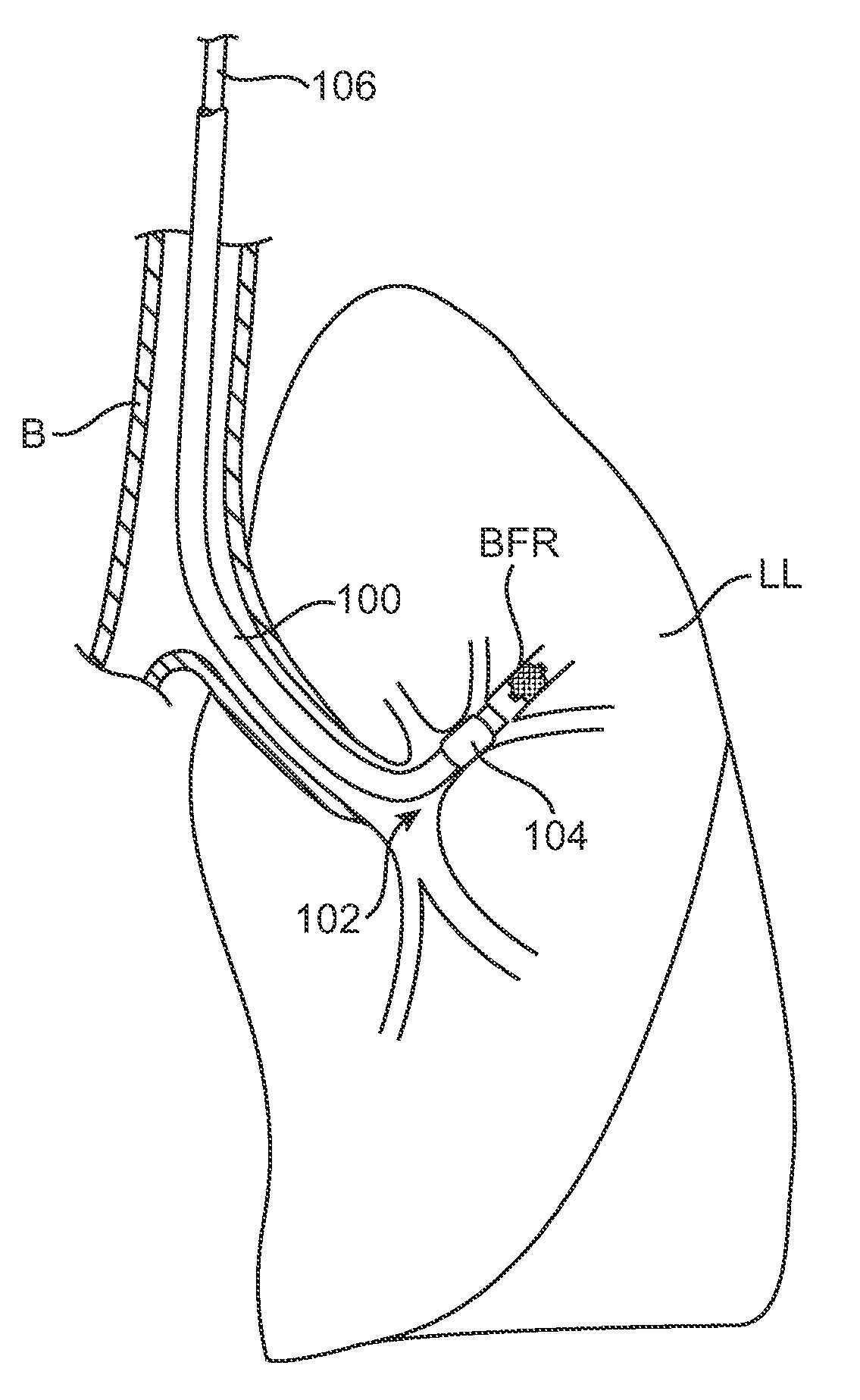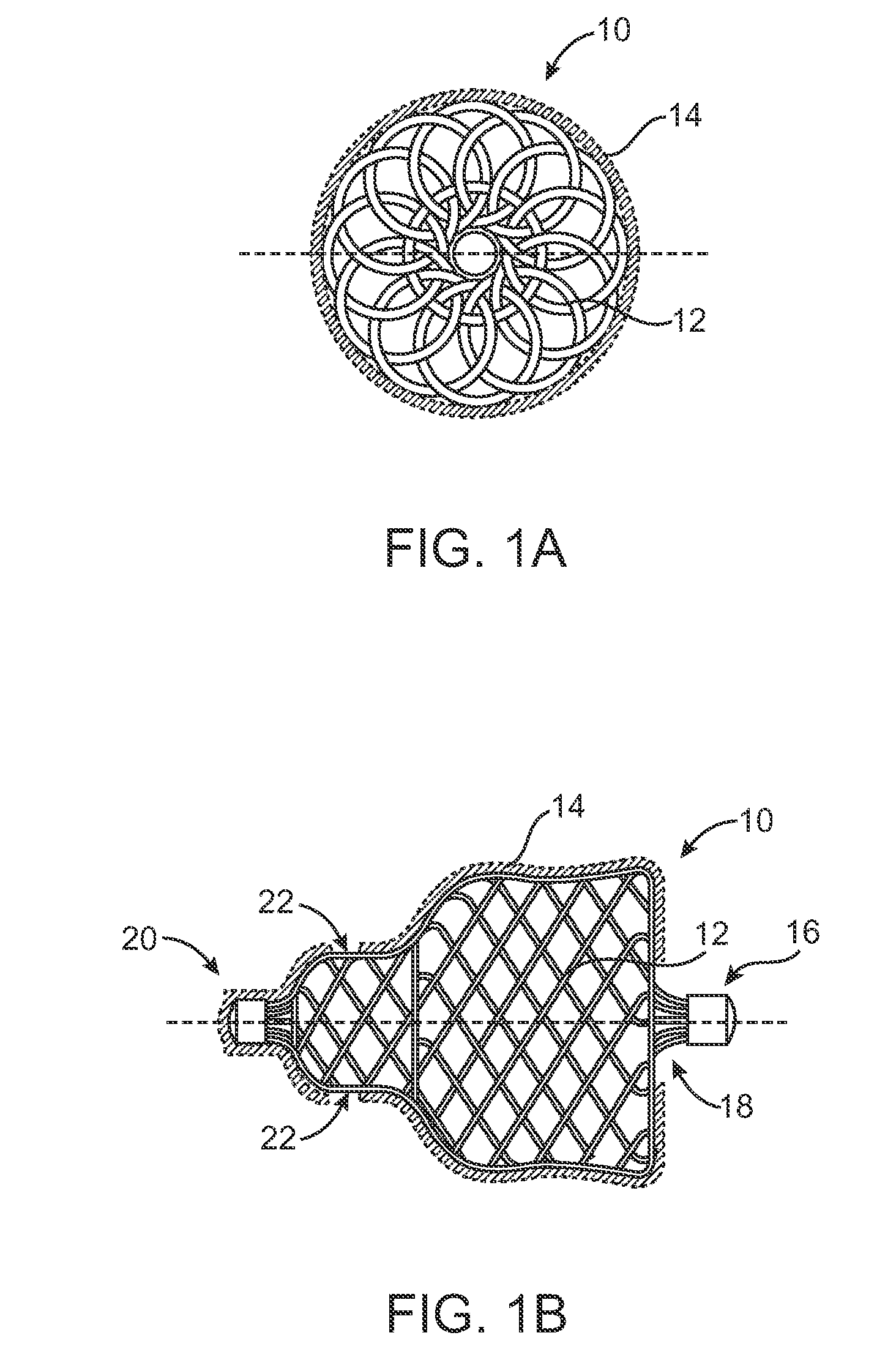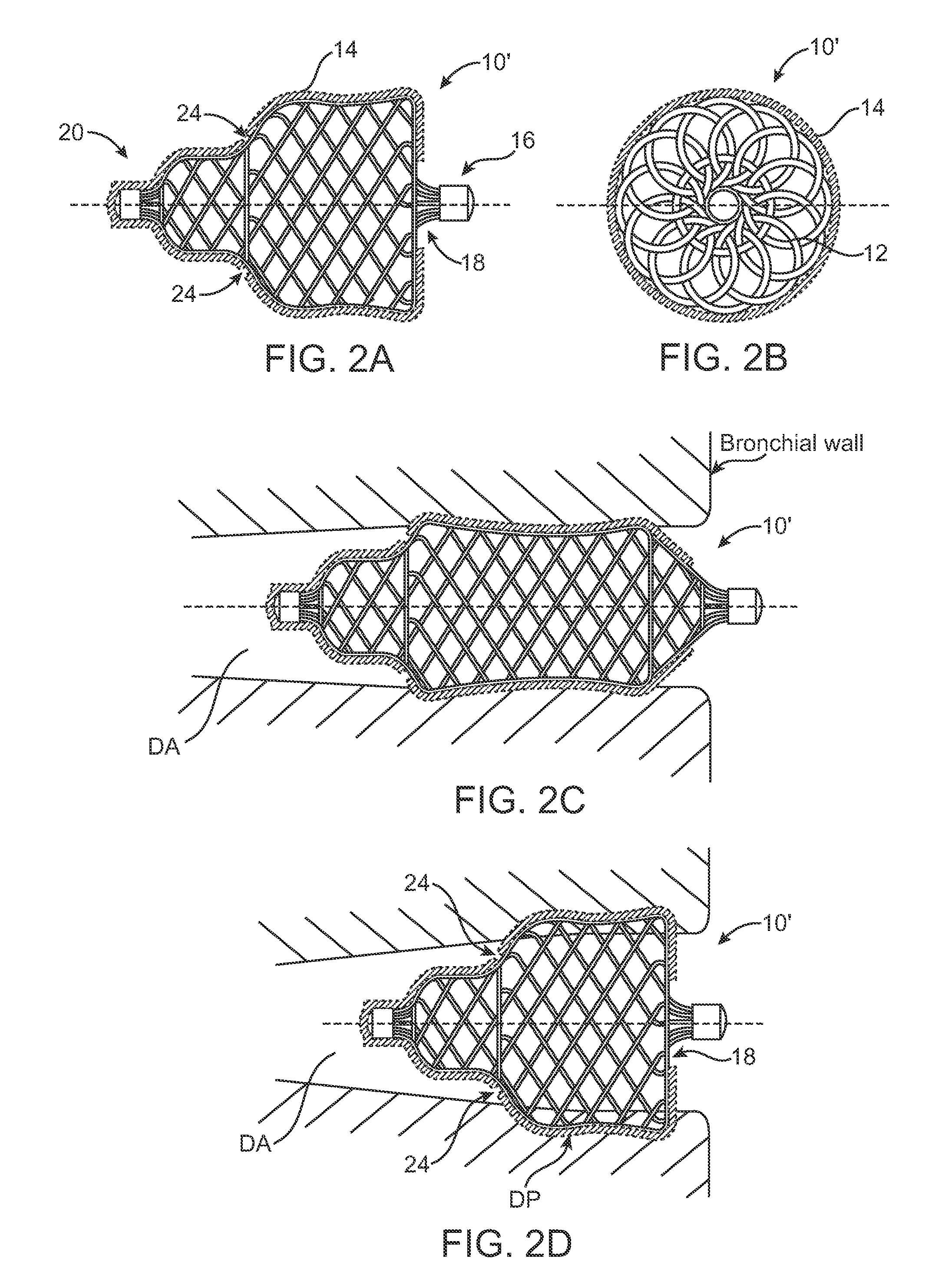Methods and devices to induce controlled atelectasis and hypoxic pulmonary vasoconstriction
a technology of pulmonary vasoconstriction and atelectasis, which is applied in the field of medical methods, systems and kits, can solve the problems of significant risk of pneumothorax and uncontrolled collapse of the treated region, and achieve the effect of reducing the rate of air exchange and reducing the rate of air flow
- Summary
- Abstract
- Description
- Claims
- Application Information
AI Technical Summary
Benefits of technology
Problems solved by technology
Method used
Image
Examples
Embodiment Construction
[0042]In the descriptions below, specific designs for bronchial flow restrictors are described. The restrictors can be placed in any bronchial airway, but generally the airways between and including the lobar bronchus and sub-sub-segmental bronchi are the desired airways to restrict. The restrictor is intended to impede air flow in both the inspiratory and expiratory direction usually about equally, and either permanently or temporarily. Flow limitation can be from 10% to 99.99% reduction of flow, usually being from 99% to 99.9% of the unrestricted flow, depending on the clinical need.
[0043]The flow limitation will have at least one of two physiologic effects. In instances where the lung region distal to the restrictor is generally free from collateral ventilation, the restrictor will induce a controlled atelectasis. The distal lung region will collapse, although at a significantly slower rate of collapse than would be the case with complete occlusion of air flow into the region, an...
PUM
 Login to View More
Login to View More Abstract
Description
Claims
Application Information
 Login to View More
Login to View More - R&D
- Intellectual Property
- Life Sciences
- Materials
- Tech Scout
- Unparalleled Data Quality
- Higher Quality Content
- 60% Fewer Hallucinations
Browse by: Latest US Patents, China's latest patents, Technical Efficacy Thesaurus, Application Domain, Technology Topic, Popular Technical Reports.
© 2025 PatSnap. All rights reserved.Legal|Privacy policy|Modern Slavery Act Transparency Statement|Sitemap|About US| Contact US: help@patsnap.com



